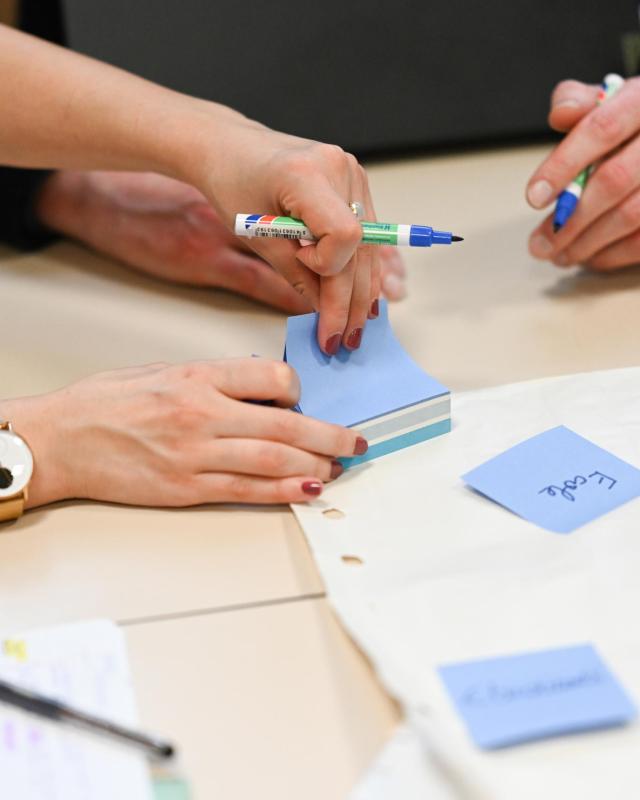These teachers' testimonials are grouped according to their main characteristics.
Asynchronous distance learning
It relies on the use of media (commented ppt, videos) and allows the student freedom of time to be followed. This form of teaching corresponds to the method known as asynchronous mediated lecturing.
Hybrid teaching and distance learning using videos in Histology
For several years, Caroline Canon and her fellow teaching assistants in the Histology course have been experimenting with the use of video capsules in a flipped classroom format initially in hybrid mode, then within the confines of confinement, in 100% distance mode . Among the positive elements that emerge, Caroline Canon points to more active and in-depth work on the subject, enabling richer exchanges between students and teachers. Key words: flipped classroom, videos, commented PPT.
Testimony of Caroline Canon
The good thing is that we're working on student autonomy. This allows us to work in greater depth, as some students came up with questions after watching the video. Above all, it saves time on the slides. The assistants have more time to accompany them and answer their questions.

Live distance learning
It relies on the use of media to enable interactivity and is given synchronously. This form of teaching corresponds to the method known as synchronous mediated lecturing.
Live remote teaching and collaborative student work
In her "Regulation and technological innovations" course, Elise Degrave opted for live and collaborative teaching during the confinement. In order to get the students active, they were given assignments to carry out beforehand. During the course, after a framing by the teacher, students were invited to exchange in tandem, remotely, around the regulation of the same technology and to present a summary of their exchanges to the others. "This is a course that is traditionally very interactive. I institute a lot of exchange time between students and I didn't want to lose that by switching to distance learning.", shares Elise Degrave. Key words: distance learning, student exchanges and collaboration, Messenger, Jistsi, Teams
The flipped classroom
It reverses the traditional order of teaching activities. Thus teaching activities will be carried out at home and application activities will be carried out in the classroom. The flipped classroom can take place 100% remotely or be hybrid.
Flipping foreign language preparatory courses into distance learning
During language preparatory courses, Marc Miceli and his colleagues at ELV developed a distance learning device based on the principle of the flipped classroom. After a period of preparation, students worked live in large and small groups via TEAMS "channels". The interaction enabled by the device was much appreciated by the students. Key words: flipped classroom, subgroup work, interactivity, active methods, TEAMS Channels.
Testimony of Marc Miceli
On the plus side, all this experience is very useful for my distance learning courses. I systematically use this three-step structure: a collective time, a time for working in small groups and then a time for concluding together. It's very effective. It's a great advantage to have been able to develop a group dynamic.

Teaching by learning path
Distance learning for very large groups
During preparatory courses for medical and dental entrance exams, Paul Bouhy developed a distance learning system for chemistry based on learning paths. This system proved suitable for very large cohorts (around 700 students) with heterogeneous baggage. Key words: teaching paths, commented powerpoint, MCQs.
The remote project approach
This teaching method is based on a project to be carried out by the students. This project prompts them to question the knowledge or skills they need to develop, and prompts the search for solutions. The project anchors learning in real-life experience and gives it meaning.
Coaching collaborative work remotely
As part of Block 1 projects Lhorie Pirnay reorganized coaching of students' group work by exploiting the TEAMS tool and its channels. Key words: project-based approach, Learning by doing, Teams.

